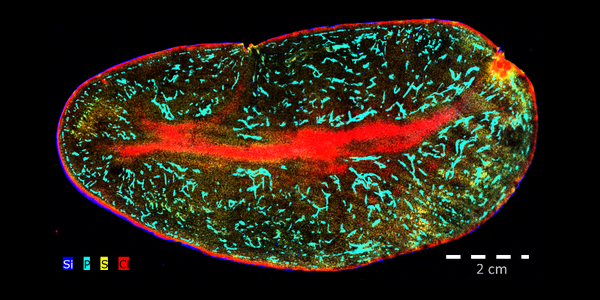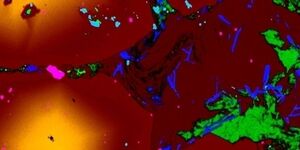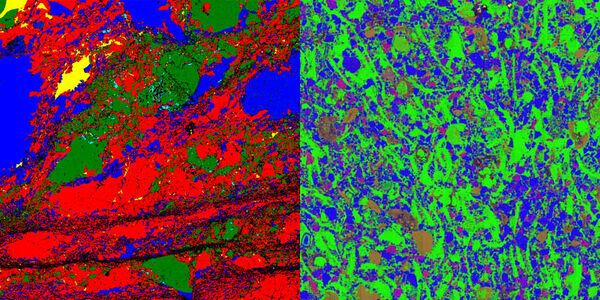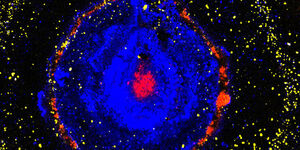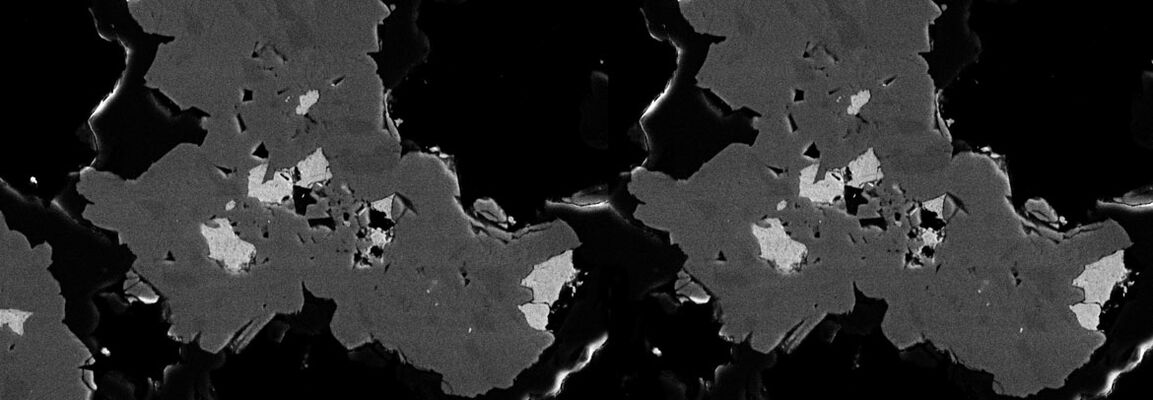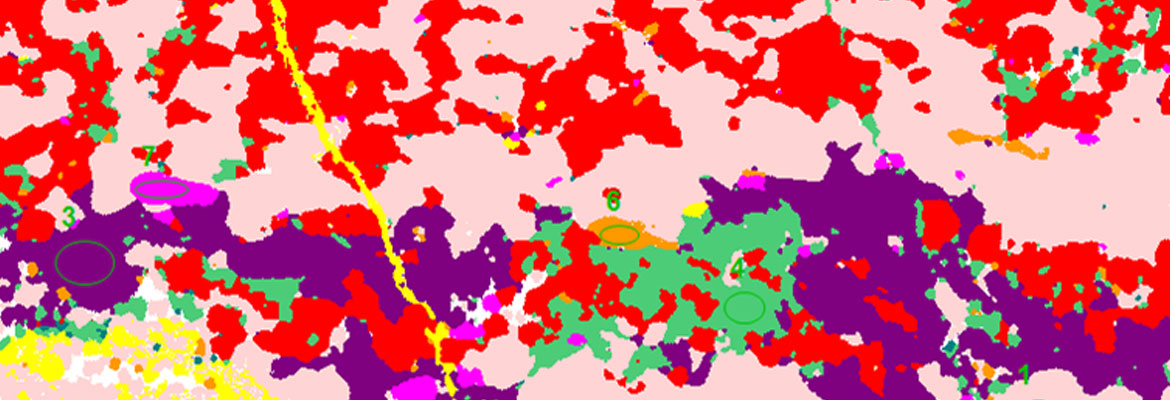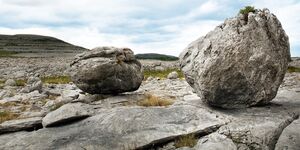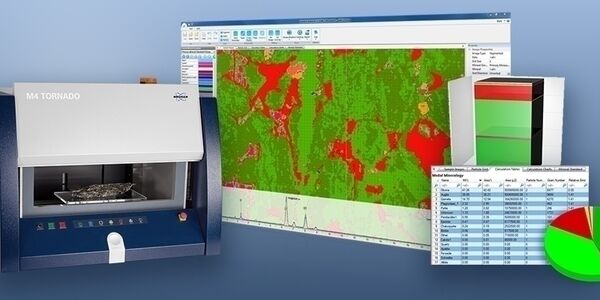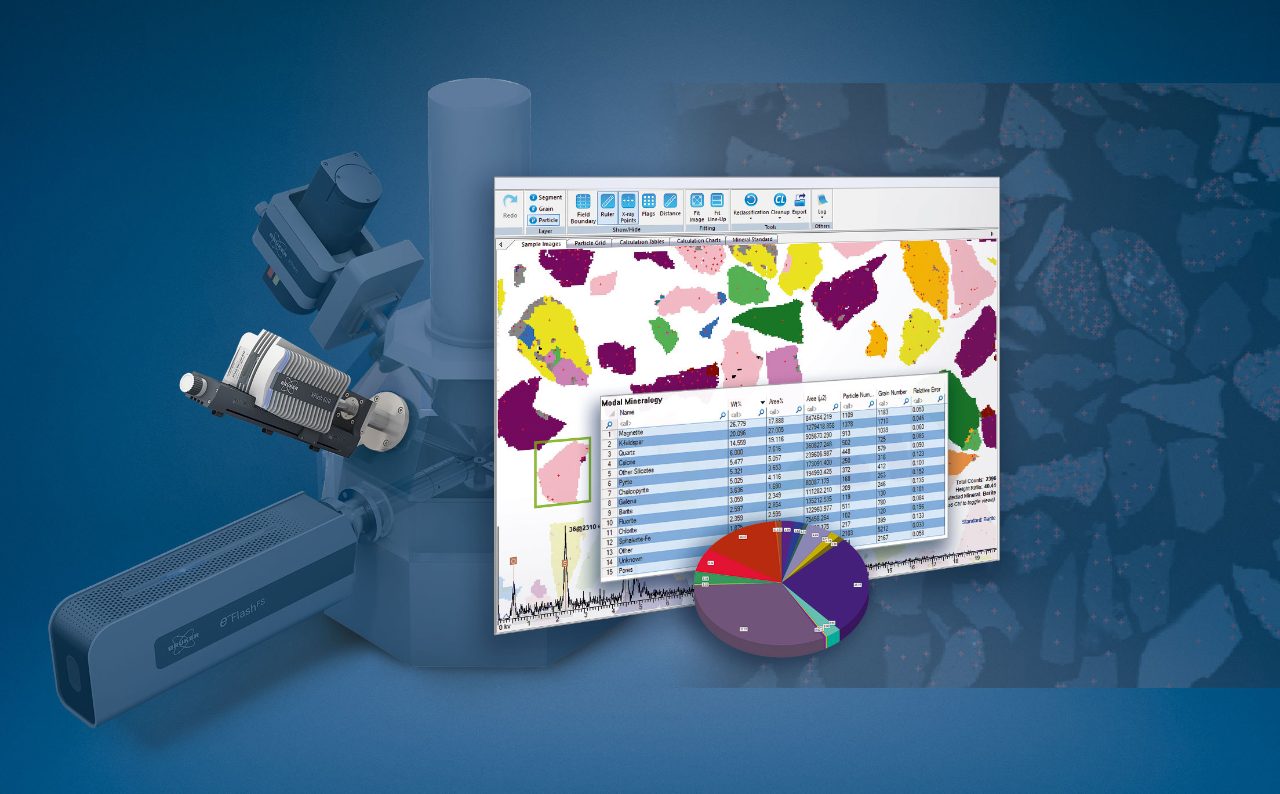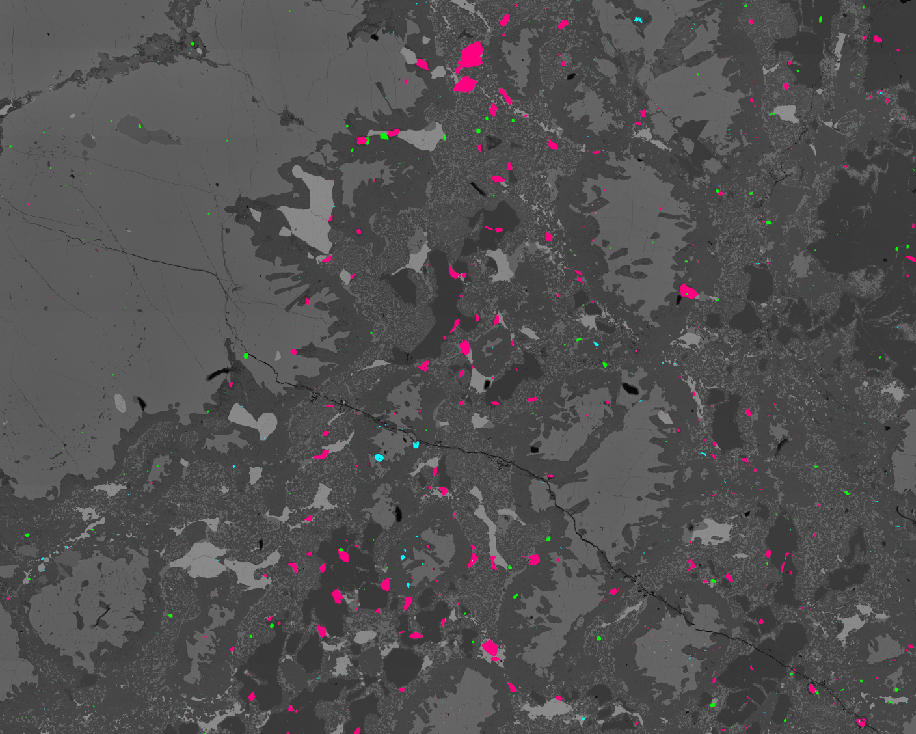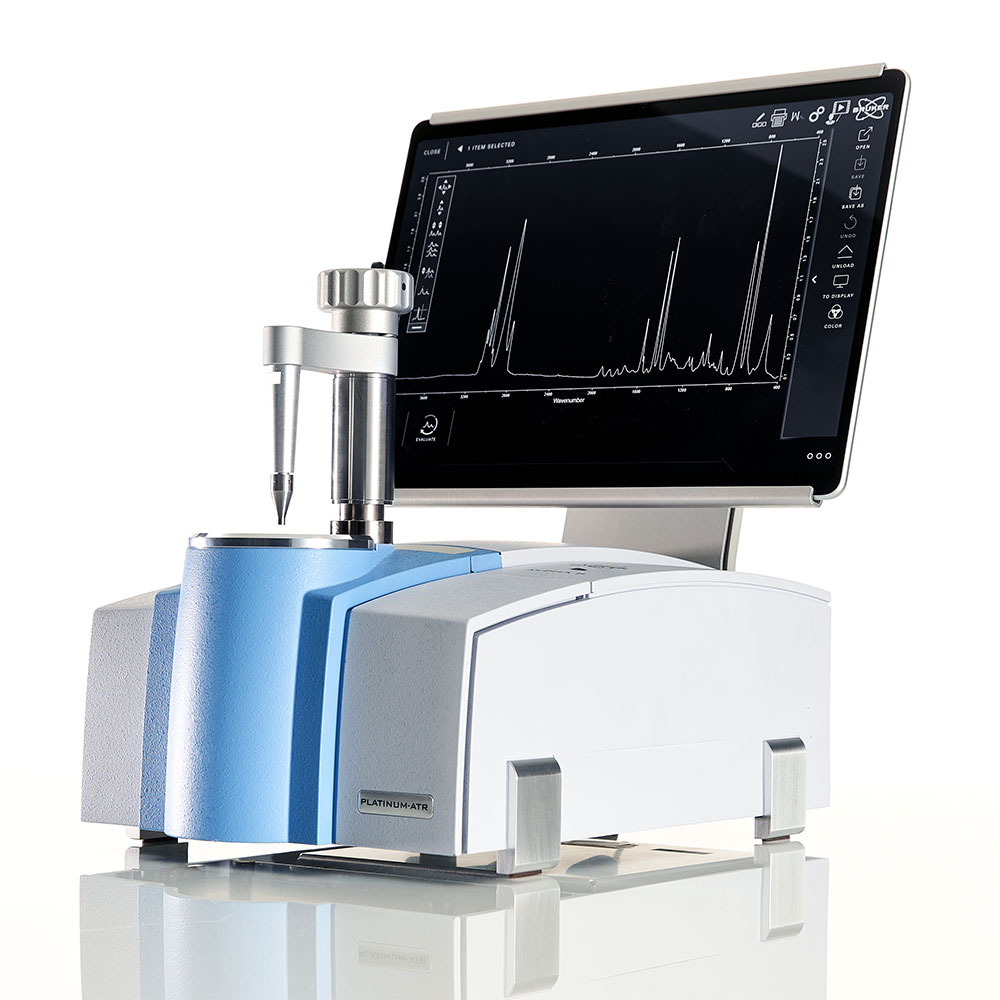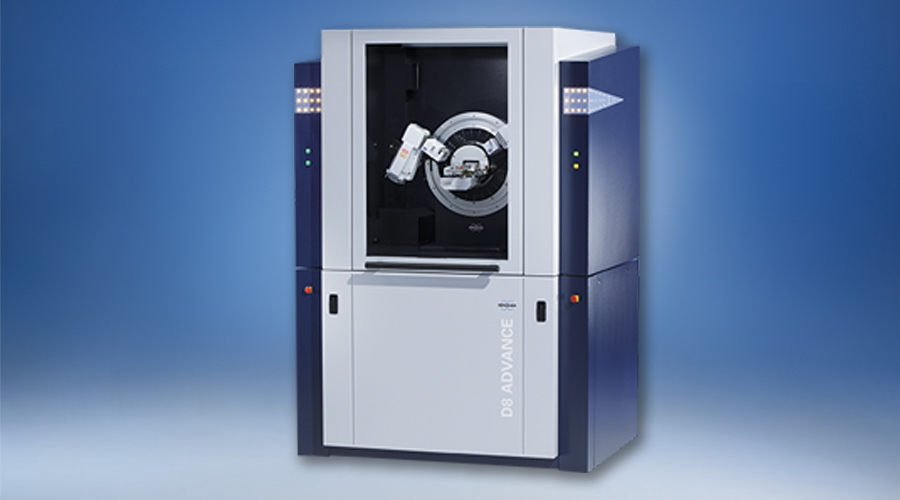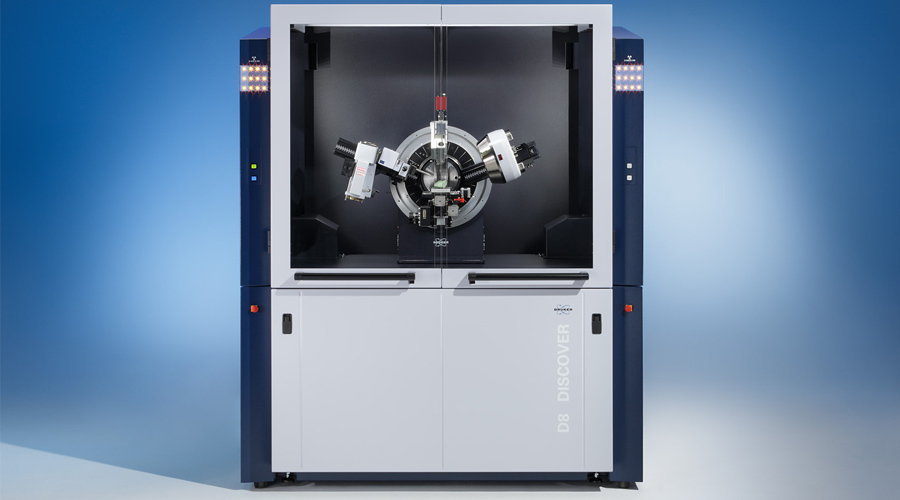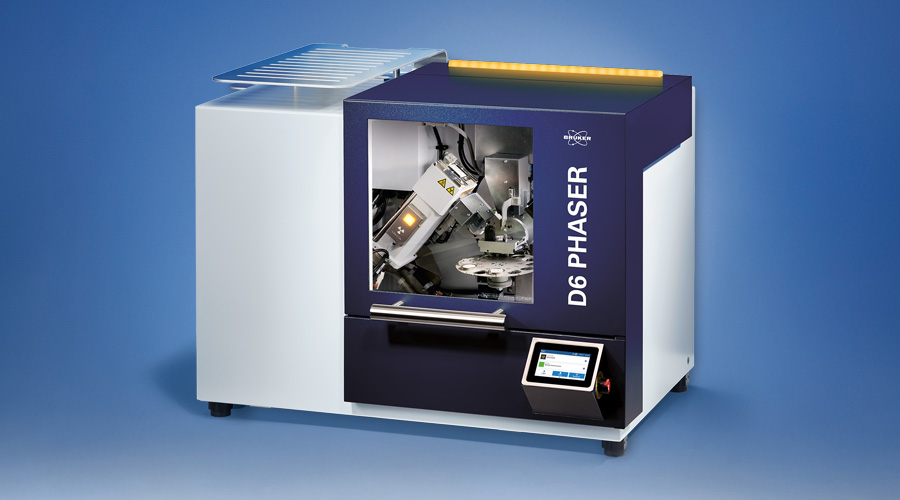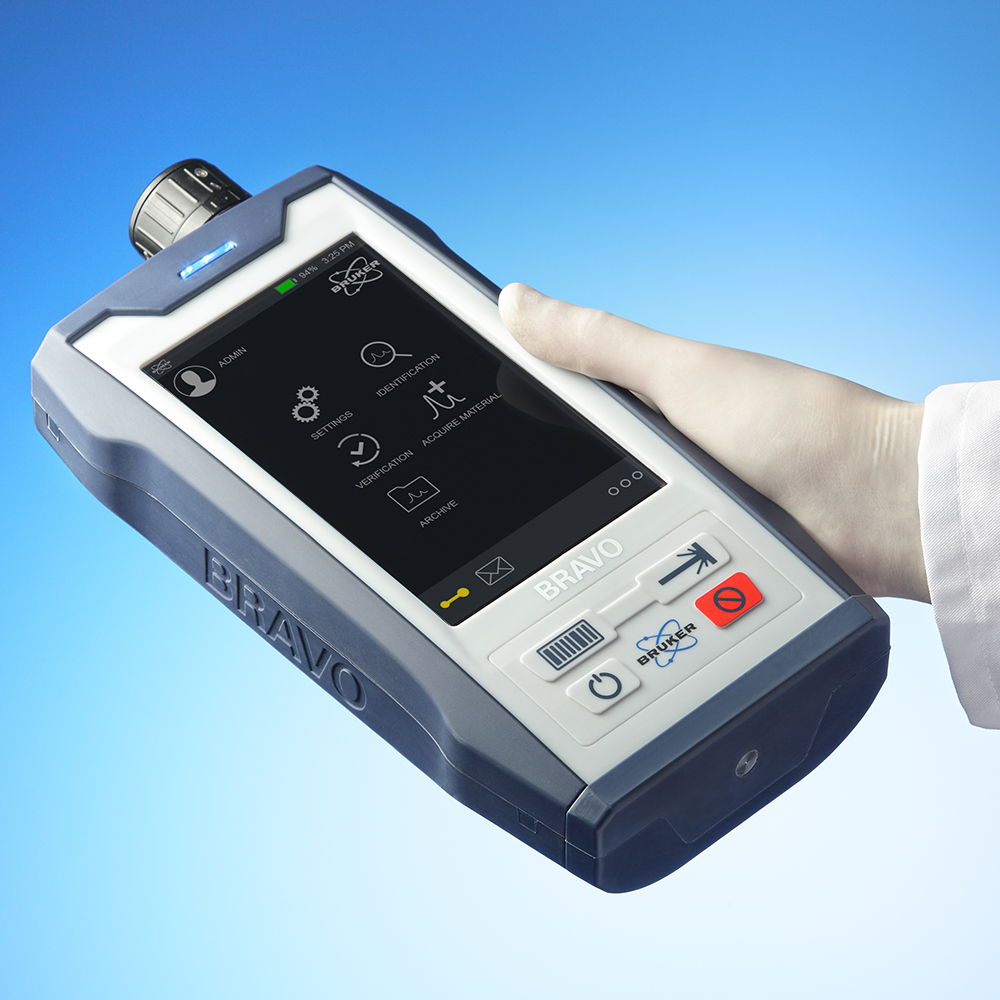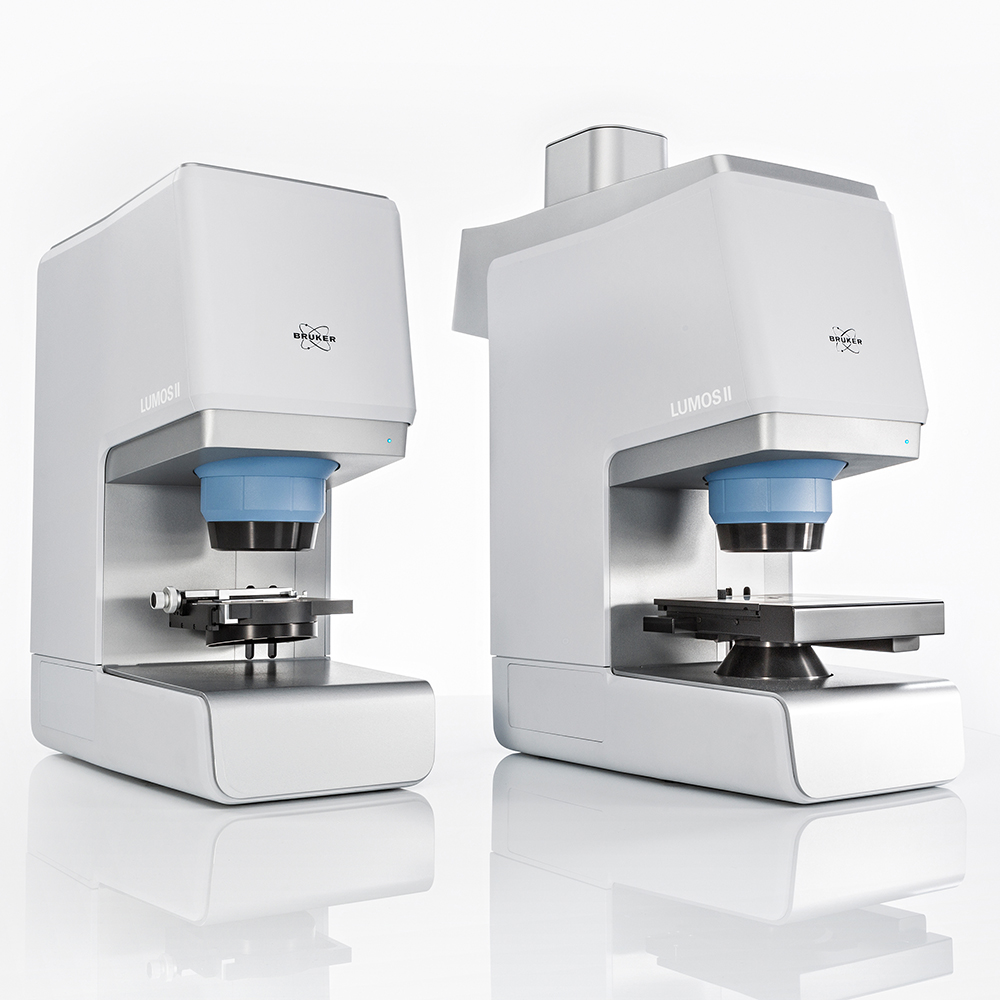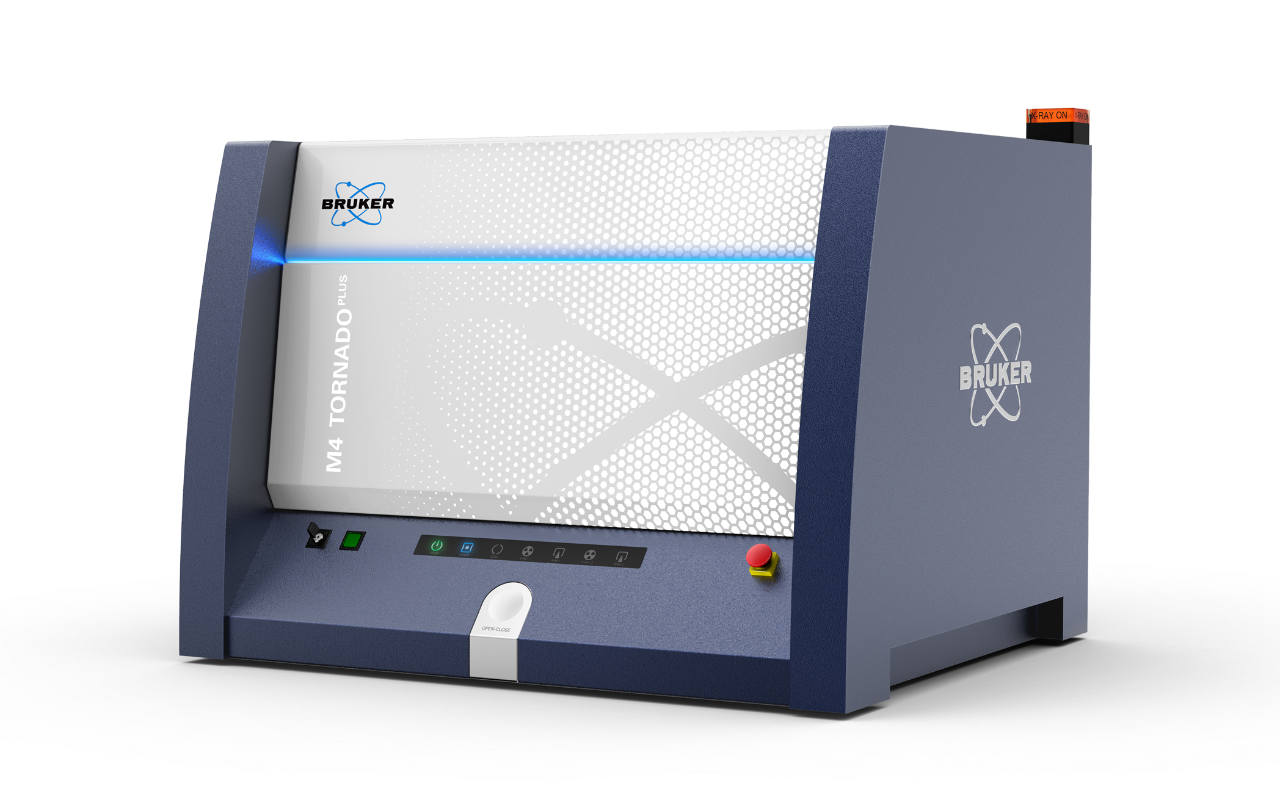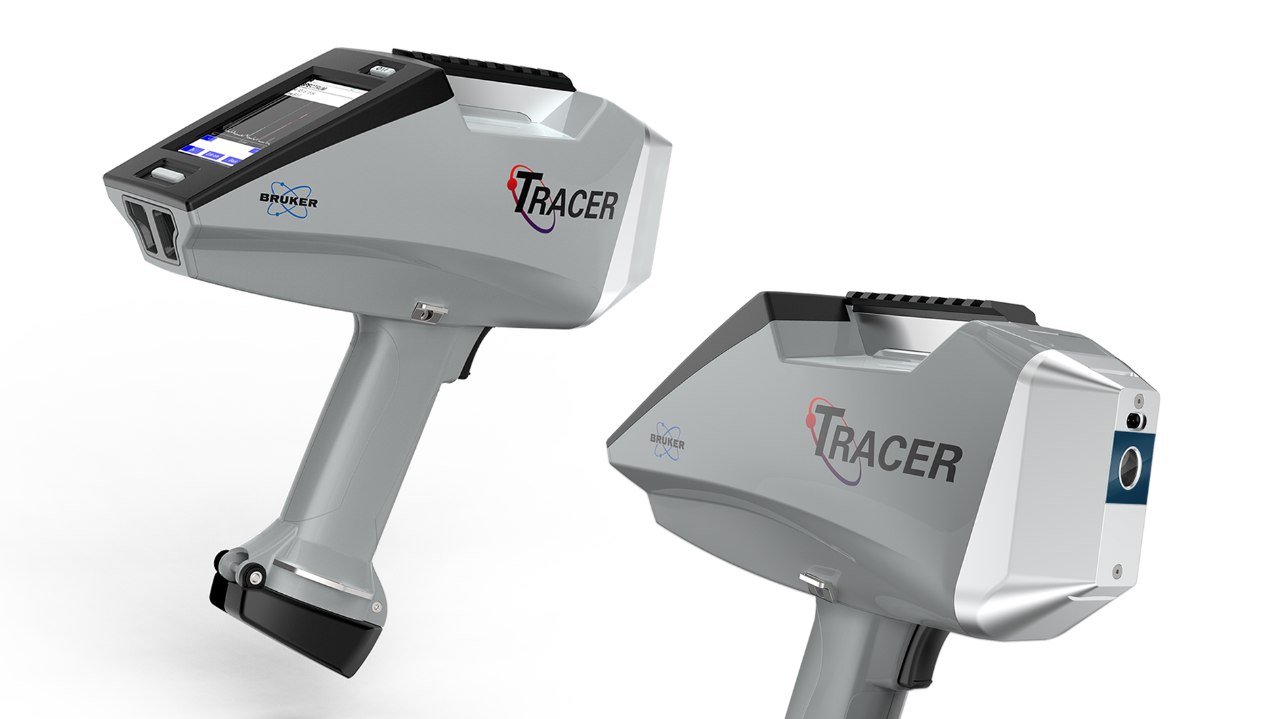

Planetary Geology and Astrobiology
Extraterrestrial Investigations with Out of the World Technology
Extraterrestrial materials that come to Earth as meteorites or collected by missions into space by humans, satellites or rovers provide key links to the origins of planets and solar systems. Rock and mineral samples that make it to Earth through direct sampling or as meteorites are precious and their study demands limited invasive analysis and maximization of the materials in hand. Study of analogues and simulated materials allow improved ability to interpret what we is seen through remote sensing, and develop remote tools to operate in the rugged and extreme environments on other planetary bodies. Bruker partners with scientists to provide the appropriate tools for your research in planetary geology.
Meteorite Characterization and Classification
Meteorites and micro-meteorites are among the only accessible solid materials from non-Earth/Moon rocky bodies, commonly preserving the records of processes dating back to the formation of the solar system. Classification of meteorites is based on a combination of mineralogical, bulk chemical, and isotopic compositions, and commonly relies on destructive analytical techniques. However, information on their origins doesn't just come from bulk compositions but the spatial distributions of minerals and elements. Geochemical and mineralogical mapping techniques provide these key data.
- Rapid major and trace element analysis by the TRACER or TITAN handheld XRF makes identification of many meteorite classes in the field or in the lab simple, limiting the number of samples that need further investigation by more expensive techniques.
- Elemental mapping using M4 TORNADO and M4 TORNADO PLUS micro-XRF instruments allow bulk geochemical data without the need for destruction of sensitive samples. Maps allow comparison of domains present within a single sample, such as compositional differences between breccia fragments or assessment of primary mineralogy versus secondary alteration products formed during impacts, transit through Earth's atmosphere, or on the Earth's surface. Additionally, compositional maps provide context and improved targeting for further analysis by higher-resolution techniques such as isotope analysis.
- When looking at higher magnifications on smaller samples, QUANTAX EDS and QUANTAX WDS systems for scanning electron microscopes provide compositional point analysis at micron- and sub-micron scales and mapping in detail over areas as large as a thin section. Couple these detectors with QUANTAX EBSD to constrain mineral structural information.
- Bruker's vibrational spectroscopy solutions such as the Hyperion series FT-IR microscope and Senterra Raman microscope delve deeper where elemental data is insufficient, such as characterization of amorphous vs crystalline materials, and identification of inorganic vs organic carbon.
- X-ray Diffraction is used by many of the top museums in the verification of meteorite specimens. The extreme conditions that the metals are subject to often result in the discovery of unique new phases. Lunar Materials and Collections (add bullet point): The fine, powder like surface of the moon, referred to as lunar regolith has a make-up quite different than terrestrial materials. X-ray Diffraction plays an complementary role to elemental techniques, such as XRF, as it is sensitive to the crystallographic structure of the material. Analog studies (add bullet point): When studying the effects of martian and lunar dust on equipment it is important to account not only for the elemental composition, but also the crystallographic structure of the simulant. The D2 PHASER is commonly used in Lunar and Mars simulant studies to ensure that the phase quantification of simulants matches these extraterrestrial environments.
Bring Lunar Materials and Collections Back to Science
Direct samples of the moon are limited, and include those returned from the Luna unmanned and Apollo manned missions to the lunar surface in the 1960's and 1970's, and meteorites that have made it to Earth through much of its history. Samples of lunar rock and regolith are among our best physical record of a planetary surface and provide important information about the origin of the moon and its relationship to Earth, as well as the nature of impact processes and their evolution through time in the solar system. Bruker's tools for non-invasive micro-analysis provide focused solutions for the in-depth study of natural and synthetic lunar materials.
- M4 TORNADO and M4 TORNADO PLUS micro-XRF instruments enable rapid, large-area elemental mapping of rocks and loose particulates such as lunar soils with minimal sample preparation and no sample consumption. This rapid mapping technique not only gives greater geochemical context to fine-grained features, but reduces the volume needed for invasive sub-sampling and more destructive analytical techniques by identifying areas of most importance.
- QUANTAX EDS and QUANTAX WDS systems for scanning electron microscopes enable semi- and fully-quantitative compositional point and mapping data to characterize even the finest grained impact melt products. Bruker's QUANTAX FlatQUAD annular EDS detector provides high sensitivity even at very low beam currents, allowing precise analysis of impact glasses in rock and regolith samples.
- QUANTAX EBSD system provides advanced structural analysis of solid materials to investigate high-pressure mineral polymorphs, deformation processes, and low-volume melt products generated during impact events.
- Vibrational spectroscopy can benefit the analysis of lunar material tremendously. The SENTERRA II confocal Raman microscope is used to make clear and confident statements about crystallinity and chemical nature of minerals and other lunar materials. In fact, it can be used to investigate the “shock history” of lunar basalt by investigating the structural state of phases (e.g. amorphous vs. crystalline). Furthermore, Raman data can be complemented by the use of an FT-IR microscope like the HYPERION allowing statements about water content.
Analog Studies are our First Field Laboratories for Solar System Exploration
Analog studies help prepare for geologic work on other planets and provide insight into other rocky bodies in our solar system. Analog field expeditions transform similar parts of the Earth into field research, development laboratories and proving grounds for procedures, methodologies, and technologies. Analog science missions explore the extremes of surface environments on Earth to better understand the processes and products of current or past planetary locations. Analog sites are selected for geologic, environmental, or chemical similarities to other planets, moons, or asteroids. Bruker tools are used in planetary analog studies to:
- Develop standard operating procedures for the use of portable instrumentation during surface explorations
- Test policies and procedures for detailed scientific analysis in habs or surface vehicles
- Gather information about the validity and limitations of robotic data collecting
- Develop and test planetary protection protocols and biocontainment countermeasures
- Observe and understand biogeochemical processes in extreme environments including extreme chemistries, temperatures, and pressures.
The incorporation of analytical technology into analog studies enables more realistic evaluations of operating procedures, workflows, and human reactions to the presence of data. Field data collection can also enhance terrestrial science missions by providing real-time data and more accurately simulating the types of data analysis that will be collected on Mars, the Moon, asteroids and beyond. Bruker has been engaged with governments and universities in deploying portable and handheld equipment for analog missions, the development of low-cost instrumentation for destructive testing of innovative robotic protocols, and the developments of methods to meet analytical requirements on remote missions.
Bruker's portfolio of field-portable tools can be used in analog studies:
- The TRACER 5 and CTX portable X-ray fluorescence spectrometer (pXRF) can be used to simulate Extra-Vehicular Activity (EVA) data collection, hab or vehicular data collection, and data processing workflows. The TRACER is equipped with a large screen and adjustable handle capable of being used while in an environment suit. The ability for fully customizable calibrations enables accurate simulation of data processing workflows.
- The BRAVO Raman spectrometer and the ALPHA II FTIR spectrometer are ideal platforms for vibrational spectroscopy in remote and extreme locations. The rugged and easy to use BRAVO is easy to hold in an environment suit and has a large easy-to-read display. The ALPHA is a benchtop system with maximum flexibility, a built-in screen, and push-button results.
- The S2 PICOFOX enables exploring alternative methods of geochemical analysis with elemental analysis down to the PPB level for some samples in a field-portable unit without the need for consumable gases.
Bombardment Processes Through Studies of Terrestrial Impact Structures
Much about what we know of bombardment processes comes from the study of terrestrial impact craters. From the geometry of the final crater, reaction products (deformed rocks and minerals, impact melts, and ejecta) formed due to the high velocity of the impact and the ages of impact events, these remnants of past impacts tell us much about processes that shaped Earth and other rocky planets. Micro-structural and -compositional analysis of terrestrial impact products represent a first order constraint on models and projections for impact processes that have operated on Earth and elsewhere in the solar system.
- M4 TORNADO, M4 TORNADO PLUS, and M6 JETSTREAM micro-XRF instruments enable rapid characterization of large samples and drill core to allow identification of impact products such as impact melt and tephra or spherule beds. Major and minor element distributions place greater confidence in interpretations of rock textures while trace elements may confirm the presence of fine-grained remnants of the impactor.
- QUANTAX EDS, QUANTAX WDS and QUANTAX EBSD systems for scanning electron microscopes allow compositional and structural characterization down to micron and sub-micron scales, confirming the presence of deformation bands or twinning in minerals and occurrence of high-pressure mineral polymorphs allowing the size and velocities of impact events to be constrained.
Publications Related to Planetary Geology and Astrobiology
- 2019 - Icarus: Meteoroid atmospheric entry investigated with plasma flow experiments
- 2019 - Contributions to Mineralogy and Petrology: In situ multiphase U–Pb geochronology and shock analysis of apatite, titanite and zircon from the Lac La Moinerie impact structure, Canada
- 2019 - Spectrochimica Acta Part A: Molecular and Biomolecular Spectroscopy: Spectroscopic study of olivine-bearing rocks and its relevance to the ExoMars rover mission
- 2019 - Planetary and Space Science: Field and laboratory validation of remote rover operations Science Team findings
- 2019 - Astrobiology: Requirements for Portable Instrument Suites during Human Scientific Exploration of Mars
- 2017 - Geochimica et Cosmochimica Acta: Evaluation of meteorites as habitats for terrestrial microorganisms: Results from the Nullarbor Plain, Australia, a Mars analogue site
- 2005 - Planetary and Space Science: Emissivity measurements of analogue materials for the interpretation of data from PFS on Mars Express and MERTIS on Bepi-Colombo
